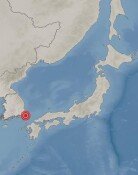Tracking holiday packages shows mass transportation of presents
Tracking holiday packages shows mass transportation of presents
Posted February. 14, 2015 08:17,
With the Lunar New Year holiday around the corner, package delivery companies are on high alert. Huge amount of holiday gifts have to be delivered one or two weeks before the Lunar New Years Day. With en-mass migration of people during the holidays, there is also a "mass transportation" of packages right before the holiday. Then, here comes a question: where is the destination that most people send their packages?
Mobile service firm SK Planet has analyzed the package delivery data of "11st," a domestic web-based shopping mall, and traced the delivery routes of products in 16 cities and provinces (excluding Sejong City) across the nation. This big data was earned by analyzing addresses of senders and receivers from 3,405,456 transactions made in the on-line shop for 17 days between Aug. 18 and Sep. 3 last year, before the Korean Thanksgiving holiday (Sept. 8). The total transaction amount during the period was 286.2 billion won (approx. 260.44 million U.S. dollars) with an average amount of 84,053 won (approx. 76.48 dollars) per transaction.
The vast majority of transactions in the on-line shopping mall were intra-regional deals, accounting for 91.1 percent (based on the number of transactions). Only 8.9 percent of the transactions were outbound to other regions. Therefore, analysis of the extra-regional transactions may show a glimpse of relations among regions, such as people in this place is more closely connected to people in that area. It is the so-called "Korean Peninsula connection index" based on the delivery of gift packages.
Excluding the capital area such as Gyeonggi Province and Incheon City, people in Seoul sent most of presents to Gangwon Province (0.43 percent) and South Chungcheong Province (0.42 percent). People in other regions such as Daegu City (0.21 percent), Gwangju City (0.18 percent), Ulsan City (0.12 percent) and Jeju City (0.07 percent) received less packages sent from residents in Seoul. The regions that sent the most presents to Seoul were South Chungcheong Province (0.42 percent) and Busan City (0.36 percent). In regards to transactions with Seoul, the highest average amount per transaction was 257,092 won (approx. 233.95 dollars) from South Chungcheong Province to Seoul. The second highest was 229,255 won from Seoul to North Jeolla Province.
Among six metropolitan cities, Ulsan had the smallest number of deals with Seoul. Busan had more frequent transportation of presents with Gwangju City than other metropolitan cities in Gyeongsang provinces, such as Daegu and Ulsan. When it comes to extra-regional transactions, Chungcheong or Jeolla provinces had the biggest volume of present transportation with the Seoul metropolitan area. On the contrary, the Gyeongsang provinces had far more intra-regional transportation, such as between Busan and Daegu or between North Gyeongsang and South Gyeongsang, outnumbering extra-regional transactions with the Seoul metropolitan area.
The Gyeongsang provinces have a large population and relatively big economic scale. This tracking data shows that the region is an independent economic region, less dependent on the capital area, an SK Planet official explained. The region with the highest volume of transaction per population (based on the 2012 census by National Statistics Office) was Seoul (8.2 percent). Jeju had the smallest volume of transaction (2.8 percent). Seouls average amount per transaction was the highest at 110,619 won. Jeju and South Chungcheong Province came in second and third with 92,442 won and 98,077 won, respectively.







